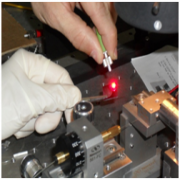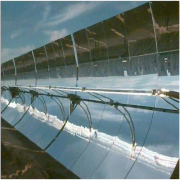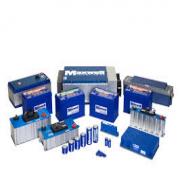Single molecule solar cells
Induce efficient charge separation (within a certain material) by light.
Induce efficient charge separation (within a certain material) by light.
We believe that in order to understand the fundamentals of these processes, especially in organic solar cells, we must try to understand them at the most well characterized, organized, and smallest system.
We therefore suggest to construct and study single molecule solar cells.
As a first stage we have developed two types of molecular junctions, on-edge and suspended wire junctions that enable interaction of light with the embedded molecules. These junctions are based on several thousands of molecules. We can prove using two types of spectroscopy, inelastic electron tunneling spectroscopy and transition voltage spectroscopy, that indeed the molecules are inside the junctions and act as the active part.
We use Raman spectroscopy to prove that indeed we can squeeze light into the junctions. Based on Raman intensity we estimate the plasmon enhancement of the electromagnetic field in our structures, which could over ~100!
We show solar cell performance based on current rectification at optical frequencies using the suspended wire junctions.
We have developed a new measurement scheme to precisely measure the plasmonic enhancement of light inside our junctions based on the magnitude of current rectification. According to these measurements plasmonic enhancement of the electromagnetic field in our junctions is ~500!
We are now moving to the next stage of performing similar experiments at the single molecule level. Here various types of molecules, specifically designed for efficient charge separation would be used.










